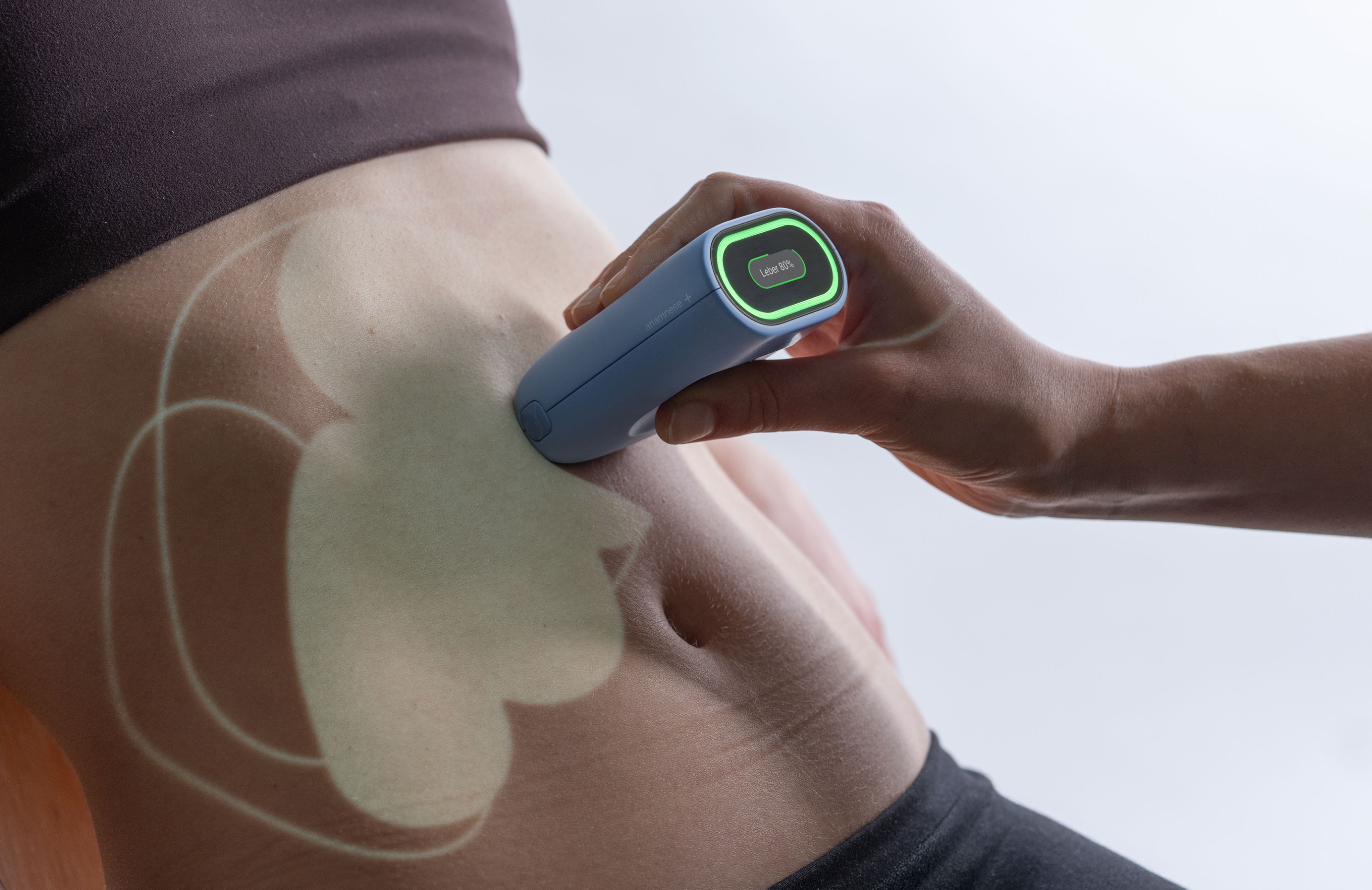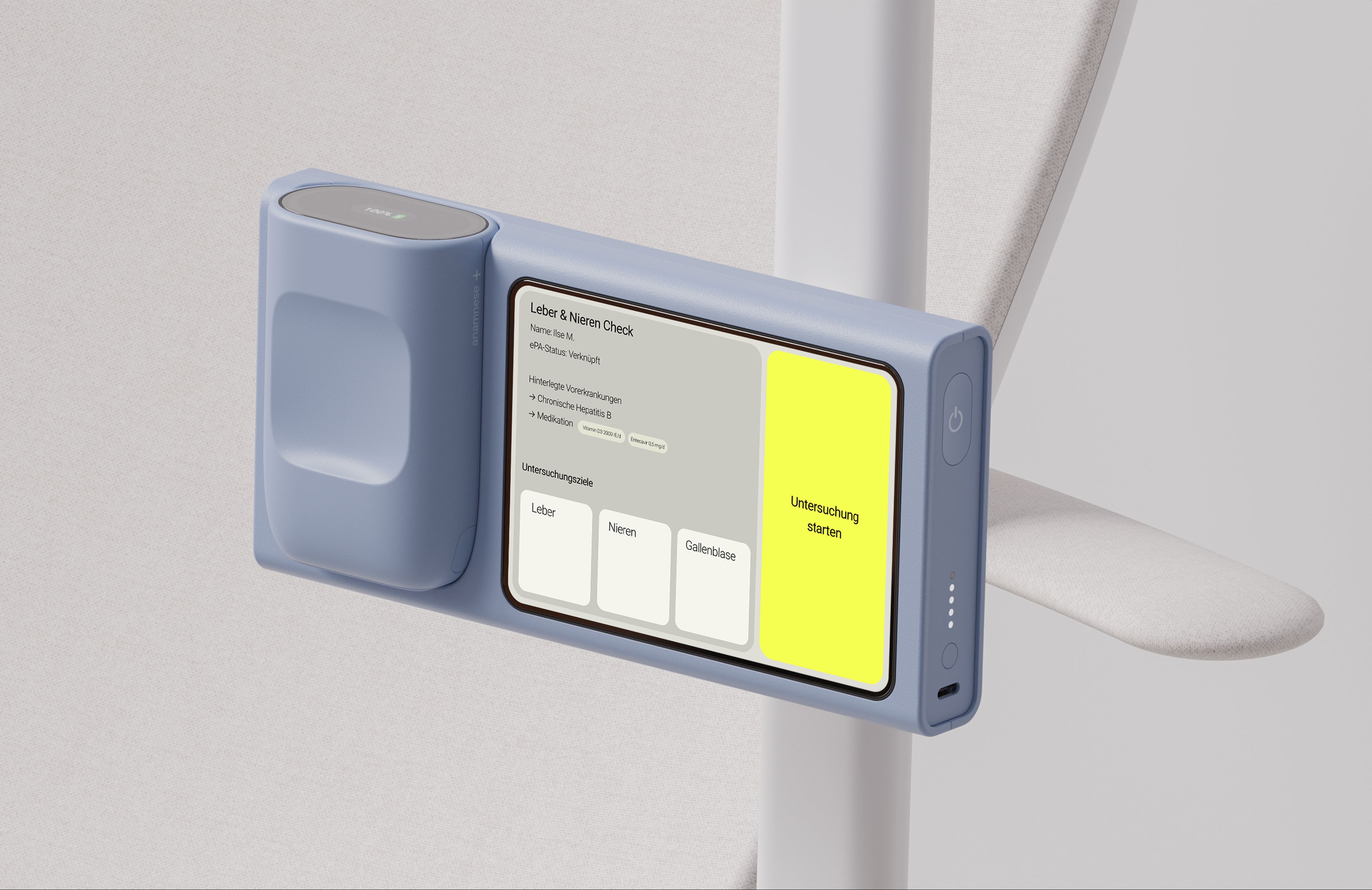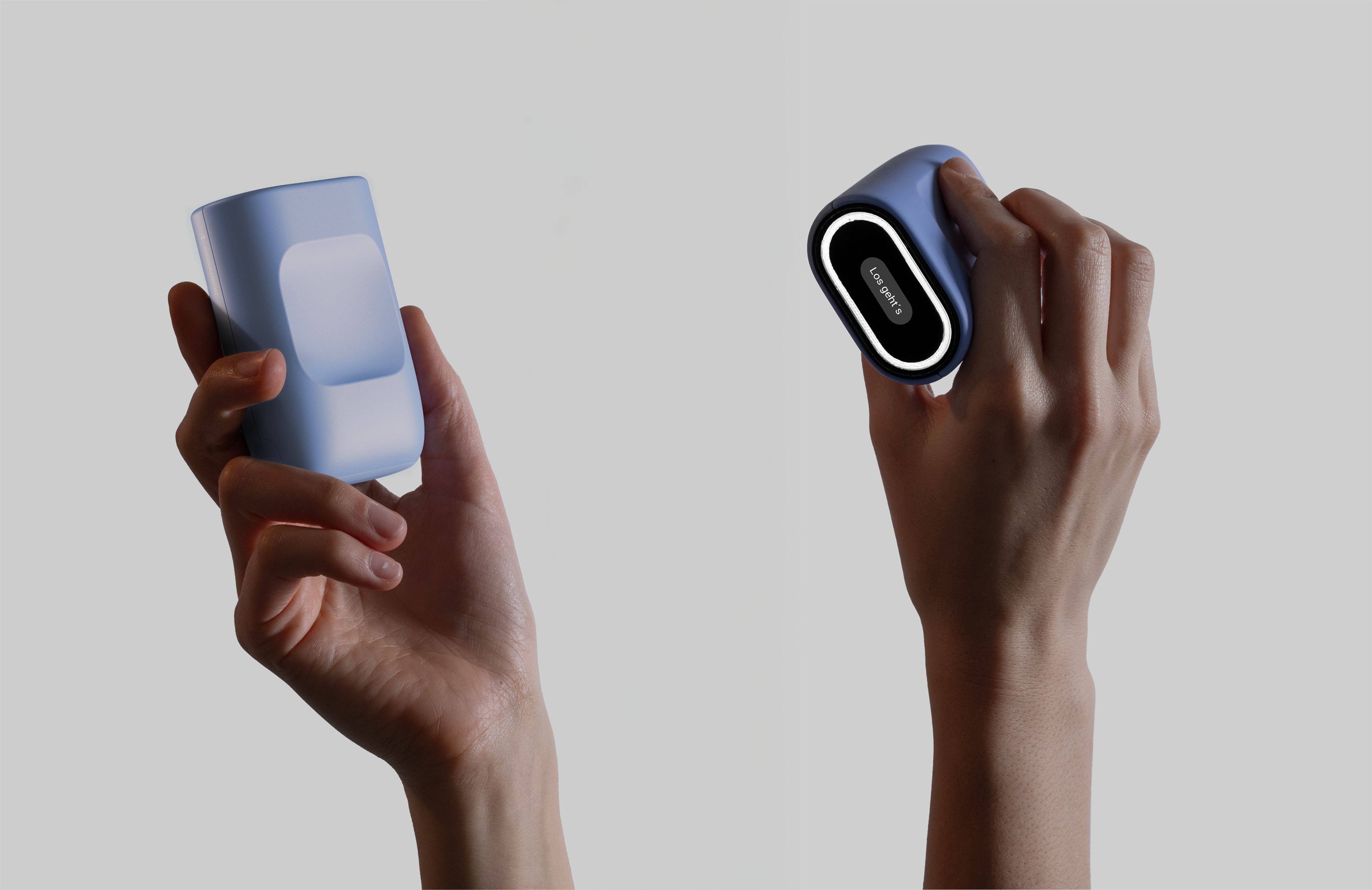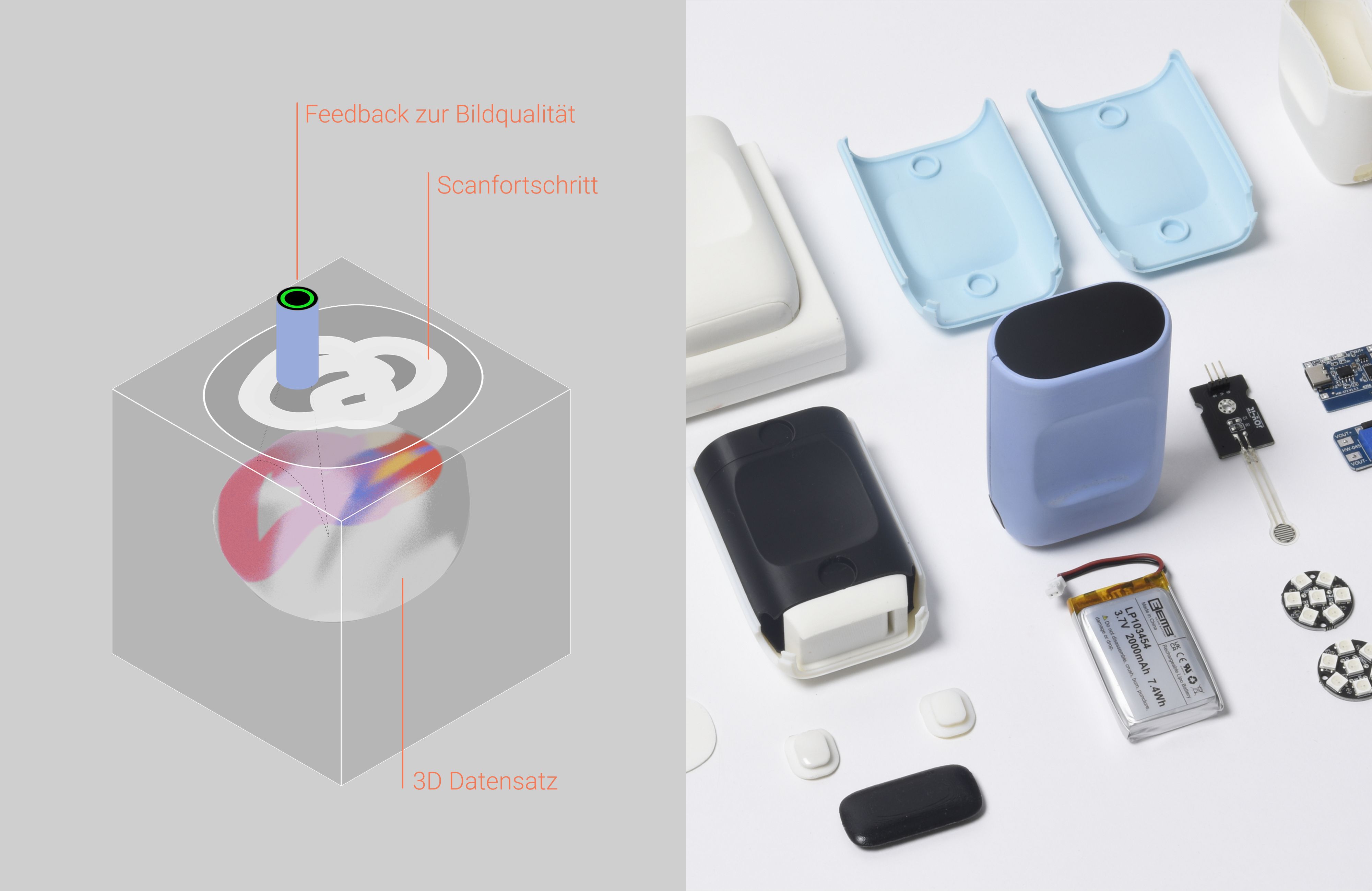
Designers
Carl Bahra
Year
2025
Category
New Talent
Country
Germany
School
Weißensee Academy of Art Berlin
Teacher
Nils Krüger
»Anamnese Plus addresses the global challenge of limited healthcare access in rural areas, guided by a strong goal to improve lives. Careful research led to a well-crafted design with attention to every detail. It features a clear and easy-to-use feedback system that requires little training. With its thoughtful approach, the system has strong potential to bring care closer to the people. It’s a meaningful step toward a fairer, healthier future.«
UX Design Awards Jury 2025 Autumn

Three questions to the project team
What was the particular challenge of the project from a UX point of view?
From a UX perspective, the challenge was to redesign the entire examination workflow from scratch. Current ultrasound procedures are based on expert interpretation of complex images. I first gained a deep understanding of these processes through an ultrasound course, field research and expert interviews to identify which elements could be rethought. The key was to move away from expert-centred interaction by simplifying data acquisition, minimizing information complexity, and guiding non-expert users through real-time scan quality feedback. Designing these workflows required intensive prototyping of scenarios, physical setups, and user interfaces, while keeping the experience simple and intuitive for non-specialist users.
What was your personal highlight in the development process? Was there an aha!-moment, was there a low point?
My personal highlight was the exchange with medical professionals who perform ultrasounds daily. Learning about their routines, and challenging their assumptions as well as my own, was incredibly insightful.
The true ‘aha!’ moment came when I realised that decoupling data acquisition from interpretation could radically simplify the user experience. Instead of complex image interpretation, non-experts could focus on generating high-quality scan data while AI handles the evaluation. The low point was confronting how rigid and complex current medical workflows are. Questioning deeply embedded routines and envisioning entirely new workflows was a daunting task, but also a necessary step toward a more accessible and user-friendly solution.
Where do you see yourself and the project in the next five years?
Over the next five years, I can see myself continuing to work at the intersection of design, healthcare and technology. There is huge potential in designing accessible medical technologies, especially by making tools that traditionally require expert knowledge usable for a broader range of healthcare professionals. I believe that good design can help democratise these advanced technologies and bring them closer to people where they live and work. Ultrasound is one powerful example of this potential. This project has opened up many avenues for further research, and I hope to find the right context and partners to continue developing it, ideally within a collaborative, interdisciplinary effort.


